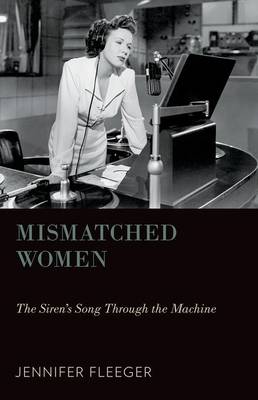
- Afhalen na 1 uur in een winkel met voorraad
- Gratis thuislevering in België vanaf € 30
- Ruim aanbod met 7 miljoen producten
- Afhalen na 1 uur in een winkel met voorraad
- Gratis thuislevering in België vanaf € 30
- Ruim aanbod met 7 miljoen producten
Zoeken
€ 181,45
+ 362 punten
Uitvoering
Omschrijving
In Mismatched Women, author Jennifer Fleeger introduces readers to a lineage of women whose voices do not "match" their bodies by conventional expectations, from George du Maurier's literary Trilby to Metropolitan Opera singer Marion Talley, from Snow White and Sleeping Beauty to Kate Smith and Deanna Durbin. The book tells a new story about female representation by theorizing a figure regularly dismissed as an aberration. The mismatched woman is a stumbling block for both sound and feminist theory, argues Fleeger, because she has been synchronized yet seems to have been put together incorrectly, as if her body could not possibly house the voice that the camera insists belongs to her. Fleeger broadens the traditionally cinematic context of feminist film theory to account for literary, animated, televisual, and virtual influences. This approach bridges gaps between disciplinary frameworks, showing that studies of literature, film, media, opera, and popular music pose common
questions about authenticity, vocal and visual realism, circulation, and reproduction. The book analyzes the importance of the mismatched female voice in historical debates over the emergence of new media and unravels the complexity of female representation in moments of technological change.
questions about authenticity, vocal and visual realism, circulation, and reproduction. The book analyzes the importance of the mismatched female voice in historical debates over the emergence of new media and unravels the complexity of female representation in moments of technological change.
Specificaties
Betrokkenen
- Auteur(s):
- Uitgeverij:
Inhoud
- Aantal bladzijden:
- 260
- Taal:
- Engels
- Reeks:
Eigenschappen
- Productcode (EAN):
- 9780199936892
- Verschijningsdatum:
- 1/09/2014
- Uitvoering:
- Hardcover
- Formaat:
- Genaaid
- Afmetingen:
- 239 mm x 163 mm
- Gewicht:
- 467 g

Alleen bij Standaard Boekhandel
+ 362 punten op je klantenkaart van Standaard Boekhandel
Beoordelingen
We publiceren alleen reviews die voldoen aan de voorwaarden voor reviews. Bekijk onze voorwaarden voor reviews.











